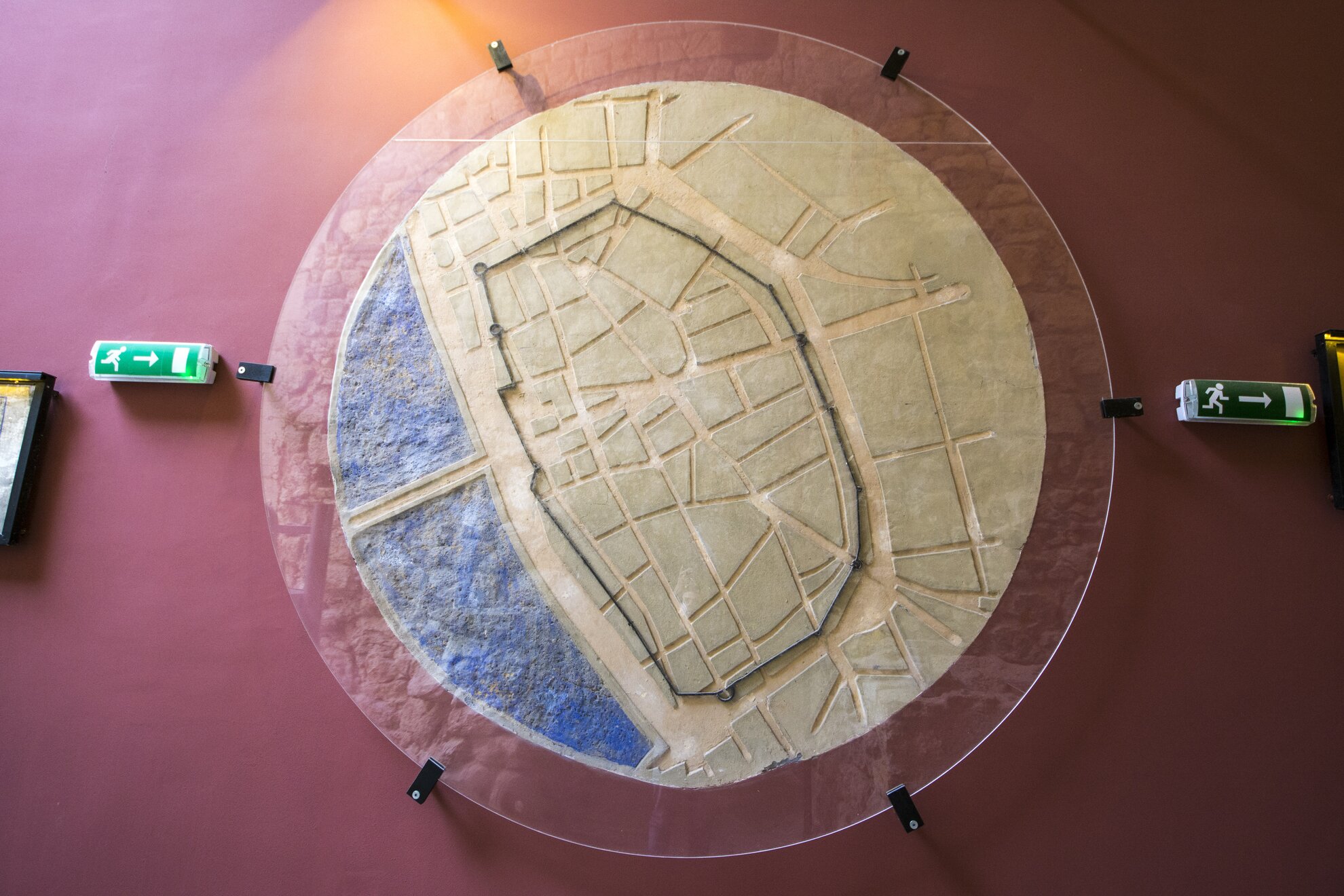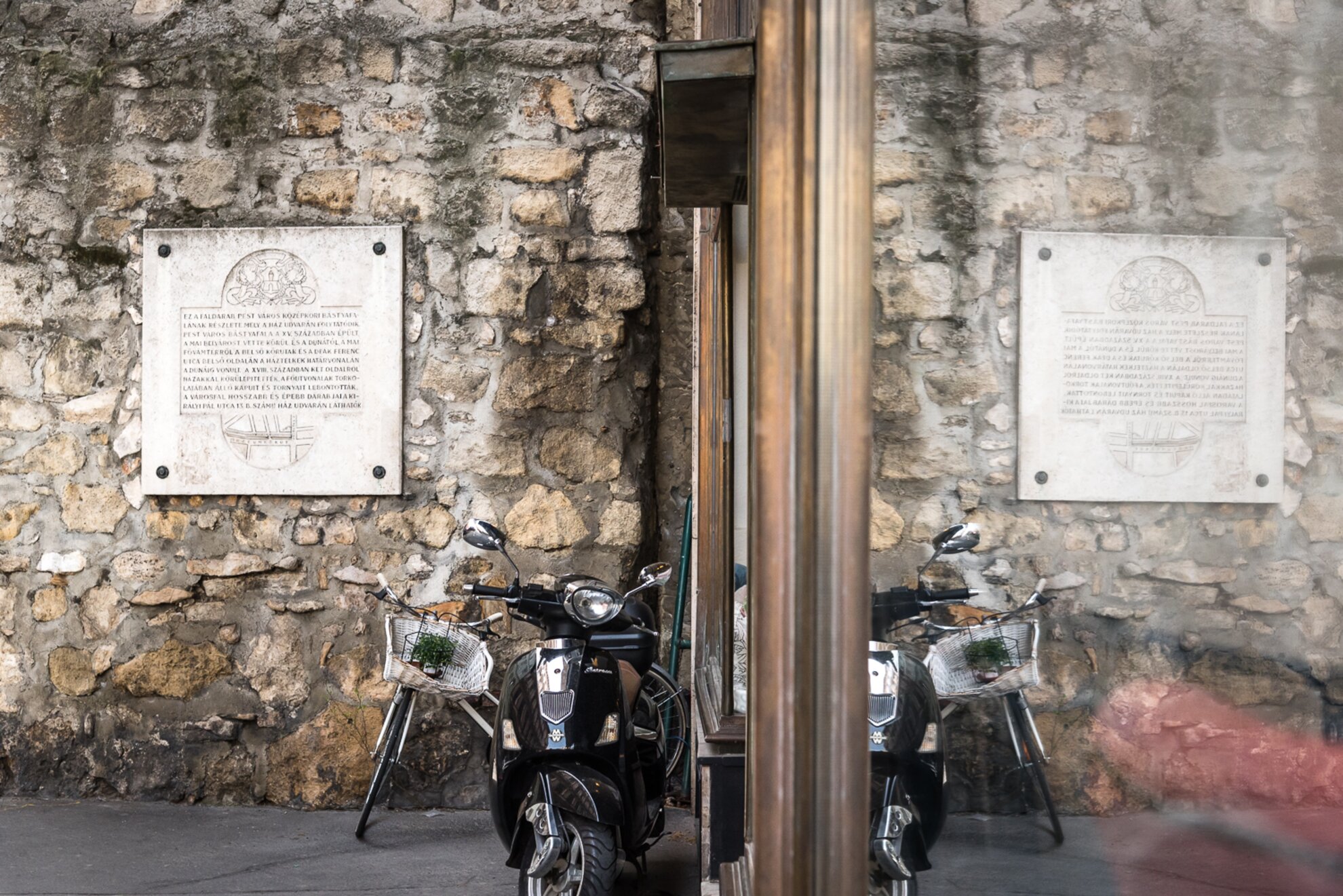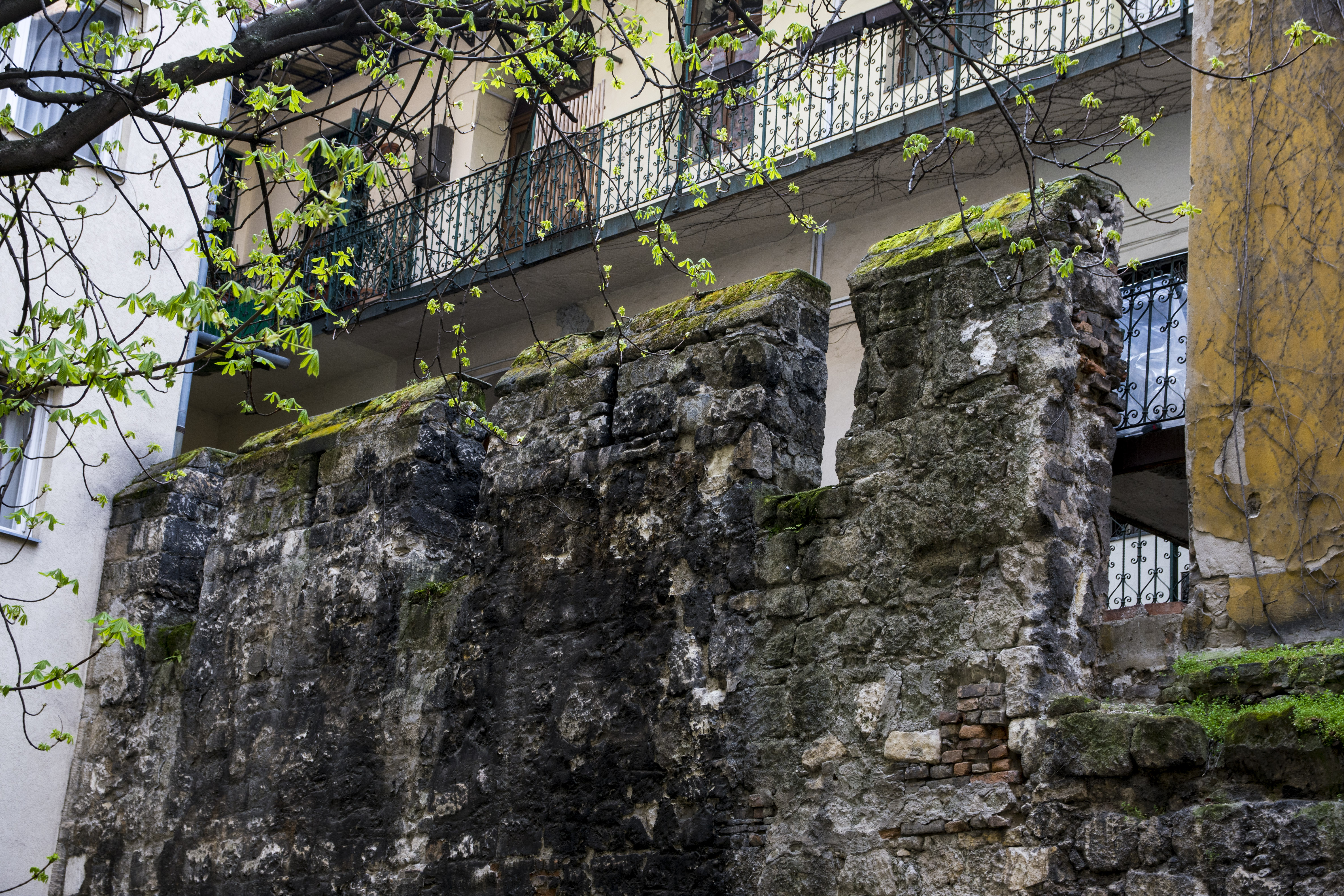There have been many times when the Magyars had to protect the territory of modern-day Budapest from foreign attacks with a massive wall, such as the one still surrounding Buda’s Castle District. However, Pest also had two walls of its own: the first one dates back to the 13th century, so it was probably built as a precaution before the Mongol invasion, while the second one was built parallel to the first one between 1444 and 1479. While the first wall is all but lost to history, we can still see remains of the second medieval wall along the Small Boulevard, stretching along the Danube riverfront before curving through modern-day Kálvin Square, Astoria, Deák Square, and Vörösmarty Square – and the wall locations are often indicated with memorial plaques.

It’s not always easy to find these remnants: most of the wall completely disintegrated over the years, and the remaining parts were often incorporated into buildings. Luckily, the old wall is still visible in some courtyards, cellars, an underground parking garage, by a playground, and at several other spots.

Hunting for every part of the wall still accessible to the public (one way or another), we found the first piece on Bástya Street near Fővám Square, where the parking lot and the playground are bordered by a large section of the wall. Workers discovered this impressively intact segment during the 1970s during the demolition of a building; its previously sheltered state is why the rampart battlements survived in pretty good shape.This piece continues for almost 30 meters on the lot that occupies Bástya Street 17, 19, and 21, and runs towards the city wall showroom on Királyi Pál Street, where everyone can see a piece that was preserved in very good condition – they only have to visit the Budapest Pont across the street during opening hours. They often host lectures here on this subject, and a relief displays how the defense wall was built, shaped, and shows where it stood.

One of our favorite wall segments is not far from here, in the parking garage of the Mercure Hotel, and it continues at the staff entrance before disappearing within the structure of the street’s buildings.

We can find small pieces of the wall in numerous buildings and some courtyards progressing towards Astoria – the only problem is that it’s not easy to get into these places. There was a part that we could only see from the window of the neighboring antique store, and sometimes we were only able to snap a picture from between bars of the neighborhood’s gates and fences.One of the most visible pieces of the wall is across the street from Csendes, where a sizable plaque indicates that this is not a mere firewall (it’s easy to mix them up), but a part of the Pest bastion wall which continues in the courtyard of the building – but getting in is hard; sadly, we couldn’t manage to do it.

However, we got lucky at Múzeum körút 9, where the wall can be seen all along the yard, and it continues through Magyar Street 10-12-14. We also found a piece of the wall in the stairwell of an office of number 36 in the same street – the helpful receptionist is happy to show it to anyone.The sightings get rarer from Astoria to Deák Square, but at the Astoria metro stop, a memorial plate on the subway wall is a commemoration of one of the wall’s main gates; its remains are now beneath the surface, next to the Astoria Hotel.

According to archaeologists, the city wall was about six meters tall and two meters wide, with an added three meters of battlements at the top. In addition to these fortifications, they expanded the defense line with a four-meter-wide moat.
The city wall had three exits: the Hatvan Gate (at Astoria), the Vác Gate (at the beginning of Váci Street), and the Kecskemét Gate (at Kecskeméti Street). These were identical, and based on the official descriptions from that period, their façades were eight fathoms (8x189 centimeters) tall while their sides were seven fathoms (7x189 centimeters) long. The Váci Gate was demolished in 1789, the Kecskemét Gate in 1794, while the Hatvan Gate in 1808, but a part of that wall stood for a long time, as the nearby houses used it for a load-bearing wall.The wall has determined a lot of things about Budapest over time, and we can still feel some of its influence in the city’s development: for example, the Jewish Quarter of District VII is where it is now because the Jewish population wasn’t allowed to trade within the walls, so the community had to do business outside of the protected zone for a long time. Even today, when walking along the semicircular Small Boulevard, it’s easy to imagine the curve of the old wall from centuries ago, especially when its remnants peek through to offer glimpses of history literally set in stone.




